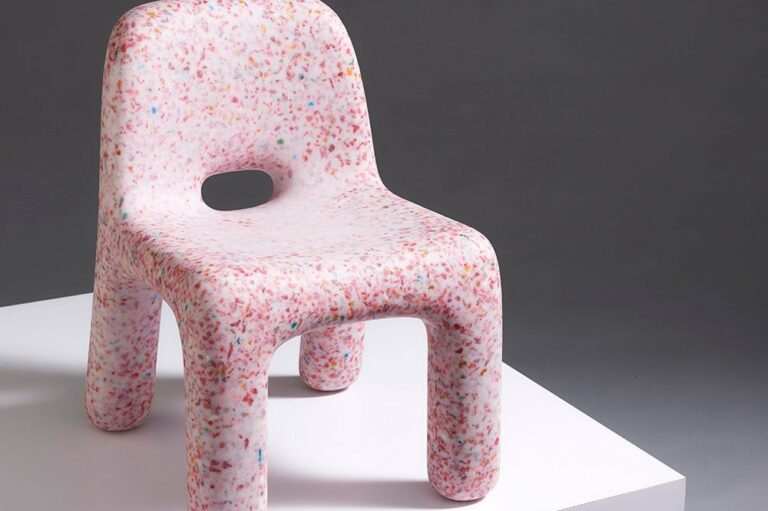Eco-Friendly Outdoor Furniture Options For Kitchens & Dining
Are you exhausted from looking for an Eco-Friendly Outdoor Furniture kitchen and dining space? You’re in luck! Making your space sustainable and eco-friendly doesn’t have to be overwhelming.
There are plenty of creative solutions to effortlessly integrate eco-friendly furniture into your outdoor haven.
With a variety of stylish, sustainable materials and practical, long-lasting designs to choose from, you have many options available. Let’s delve into the realm of eco-friendly furniture for outdoor kitchens and dining areas together, shall we?
Are there any eco-friendly furniture options for outdoor kitchens and dining areas?
Designing outdoor spaces with eco-friendly furniture is a growing trend that enhances the aesthetic appeal of outdoor areas while promoting sustainability. This article focuses on eco-friendly furniture options for outdoor kitchens and dining areas, perfect for those looking to minimize their environmental impact.
1. Sustainable Materials:
To be eco-friendly, outdoor furniture should be made from sustainable materials to lessen deforestation and encourage responsible sourcing. Here are some common sustainable materials used in eco-friendly outdoor furniture:
Bamboo:
Bamboo is a rapidly growing grass that can be sustainably harvested, making it a popular option for outdoor furniture because of its natural beauty and durability. Its resistance to moisture and insects also makes it ideal for outdoor use. For the most sustainable choice, consider furniture crafted from bamboo that is FSC-certified.
Teak:
Teak is a tropical hardwood known for its exceptional durability and resistance to decay. When sourced from sustainably managed plantations, teak can be an eco-friendly choice for outdoor furniture. Look for furniture labeled with certifications like the Forest Stewardship Council (FSC) to ensure responsible sourcing.
Recycled Plastic:
Recycled plastic furniture is becoming popular as a sustainable alternative to traditional plastic. It is made from post-consumer recycled plastic, mainly high-density polyethylene (HDPE), making it durable, weather-resistant, and low maintenance.
2. Non-Toxic Finishes:
Choosing outdoor furniture with non-toxic finishes is essential for maintaining a healthy and sustainable environment. Many conventional finishes contain harmful chemicals that can leach into the surroundings over time. Opt for furniture with eco-friendly finishes, such as:
Water-Based Finishes:
Water-based finishes are a safer and more eco-friendly choice than solvent-based ones. They emit fewer volatile organic compounds (VOCs) and toxins, offering protection with less impact on health and the environment.
Natural Oil Finishes:
Plant-based natural oil finishes such as linseed oil or tung oil have been utilized for many years to enrich the natural appearance of wood, and shield it from moisture and UV rays, all without the use of harmful chemicals. These finishes can be conveniently reapplied to extend the lifespan of wooden furniture.
3. Weather Resistance:
Outdoor furniture is exposed to various weather conditions, so opting for weather-resistant materials is crucial to ensure durability and longevity. Here are some eco-friendly materials known for their excellent weather resistance:
Stainless Steel:
Choose recycled stainless steel outdoor furniture for its durability, corrosion resistance, and sustainability. It can endure severe weather with little maintenance needed.
Synthetic Wicker:
Synthetic wicker made from recycled materials like HDPE or polyethylene offers a sustainable alternative to natural wicker. It is resistant to fading, cracking, and peeling, making it an ideal choice for outdoor furniture. Additionally, synthetic wicker requires minimal maintenance, as it can be easily cleaned with water and mild soap.
4. Minimal Environmental Footprint
Eco-friendly furniture should have a minimal environmental footprint throughout its lifecycle. Consider the following factors when selecting outdoor furniture that aligns with sustainability principles:
Manufacturing Process:
Choose furniture from manufacturers committed to sustainable production practices. Look for certifications like ISO 14001, which ensures that the manufacturer has implemented an environmental management system.
Transport and Packaging
Opt for furniture that has been locally manufactured or has a short supply chain to minimize carbon emissions associated with transportation. Additionally, choose furniture with minimal packaging, preferably made from recyclable materials.
Lifespan and Durability:
Investing in durable outdoor furniture is essential for reducing waste. Choose furniture that is built to withstand wear and tear, ensuring it will last for many years. Consider factors like warranties, material quality, and customer reviews when evaluating the durability of furniture.
End-of-Life Disposal:
Ensure that the furniture you choose has a clear end-of-life plan. Look for furniture made from recyclable materials or those that can be easily disassembled for recycling. Consider donating or repurposing furniture instead of sending it to landfills when it reaches the end of its usable life.
5. Local and Artisanal Options:
Opting for furniture crafted by local artisans is a great way to incorporate eco-friendly elements into your outdoor kitchen and dining space. This choice helps reduce the environmental impact of transportation over long distances while also supporting traditional craftsmanship and local communities.
6. Multifunctional Designs
Optimizing space and functionality is essential for eco-friendly outdoor kitchens and dining areas. Look for furniture designs that offer multi-functionality, such as:
Modular Furniture:
Modular furniture allows you to rearrange different components to adapt to your specific needs. This versatility reduces the need for additional furniture pieces and promotes efficient use of space. Consider modular seating, tables, or storage units that can be easily reconfigured.
Folding Furniture:
Folding furniture is an excellent option for compact outdoor spaces. These collapsible pieces can be easily stored when not in use, saving space and minimizing clutter. Look for folding tables, chairs, or benches made from sustainable materials.
7. Maintenance and Care:
Proper maintenance and care of outdoor furniture are essential for its longevity and sustainability. Here are some tips to keep your eco-friendly furniture looking its best:
Regular Cleaning:
Regularly clean outdoor furniture to remove dirt, debris, and stains. Use mild soap, water, and a soft brush to avoid damaging the furniture’s surface. Avoid using harsh chemicals that can harm the environment.
Seasonal Protection:
Protect your outdoor furniture from the elements during harsh seasons. Use furniture covers or store them in a protected area to prevent excessive exposure to sun, rain, or snow. This practice extends the lifespan of your furniture and reduces the need for replacements.
Refinishing and Repair:
If your furniture starts to show signs of wear, consider refinishing or repairing instead of replacing it. Sanding, re-staining, or repainting can breathe new life into your furniture. Additionally, seek professional help for complex repairs to ensure your furniture remains functional.
Faqs for Eco-Friendly Outdoor Furniture:
Yes, there are many outdoor furniture options available that are made from recycled materials. Companies now offer furniture made from recycled plastic, metal, and wood. These materials are often sourced from post-consumer or post-industrial waste, reducing the demand for new resources and diverting waste from landfills. Recycled furniture can be just as durable and stylish as traditional outdoor furniture, while also contributing to a more sustainable and circular economy.
Absolutely! There are eco-friendly furniture options available for outdoor kitchens and dining areas made from sustainable wood. One popular choice is bamboo, which is a fast-growing and renewable resource. Teak is another sustainable option, as it comes from responsibly managed plantations. Both bamboo and teak furniture are known for their durability and natural beauty, making them excellent choices for outdoor spaces.
Choosing furniture made with non-toxic finishes and adhesives offers several benefits. Firstly, it helps create a healthier environment for you and your family by eliminating the release of harmful chemicals into the air. Secondly, it reduces the environmental impact by minimizing the use of volatile organic compounds (VOCs) and other hazardous substances during the manufacturing process. Lastly, non-toxic finishes and adhesives are typically water-based or low in VOCs, making them more sustainable alternatives to their conventional counterparts.
Absolutely! Outdoor furniture made from natural fibers is a great eco-friendly option. Rattan, for example, is a popular choice due to its natural beauty and durability. It is a vine-like material derived from palm plants and can be woven into various furniture designs. Wicker furniture, a style made from weaving together natural materials like bamboo or rattan, is another sustainable option. Natural fiber furniture not only adds a touch of organic elegance to outdoor spaces but also contributes to a more sustainable lifestyle.
No, eco-friendly outdoor furniture options do not compromise on style and design. In fact, there is a wide range of stylish and contemporary furniture available that is also environmentally friendly. With advancements in sustainable materials and manufacturing techniques, eco-friendly furniture can be just as aesthetically pleasing as traditional options. Whether you prefer modern, rustic, or classic designs, you can find eco-friendly furniture that suits your style while minimizing the impact on the planet.
Final Thoughts
In conclusion, there are several eco-friendly furniture options available for outdoor kitchens and dining areas. These options include furniture made from sustainable materials such as recycled plastic, bamboo, and reclaimed wood. Eco-friendly outdoor furniture not only reduces environmental impact but also adds a touch of style and sophistication to outdoor spaces. By choosing these environmentally friendly options, individuals can enjoy their outdoor kitchens and dining areas while contributing to a greener and more sustainable future. Are there any eco-friendly furniture options for outdoor kitchens and dining areas? Absolutely, and making this choice is a step towards a more sustainable lifestyle.

